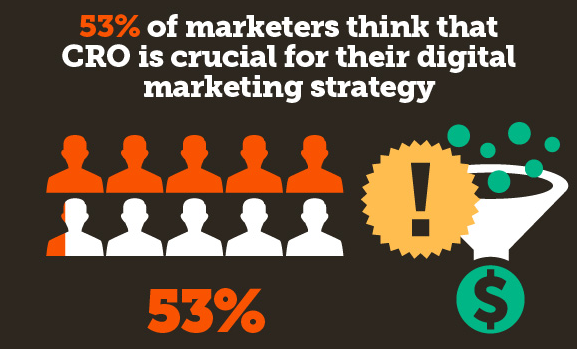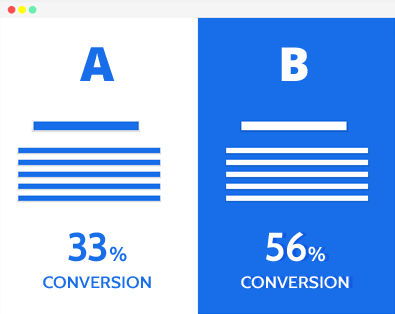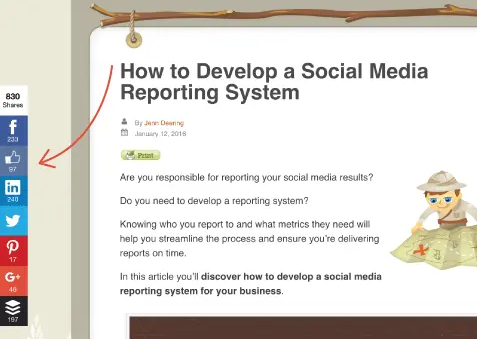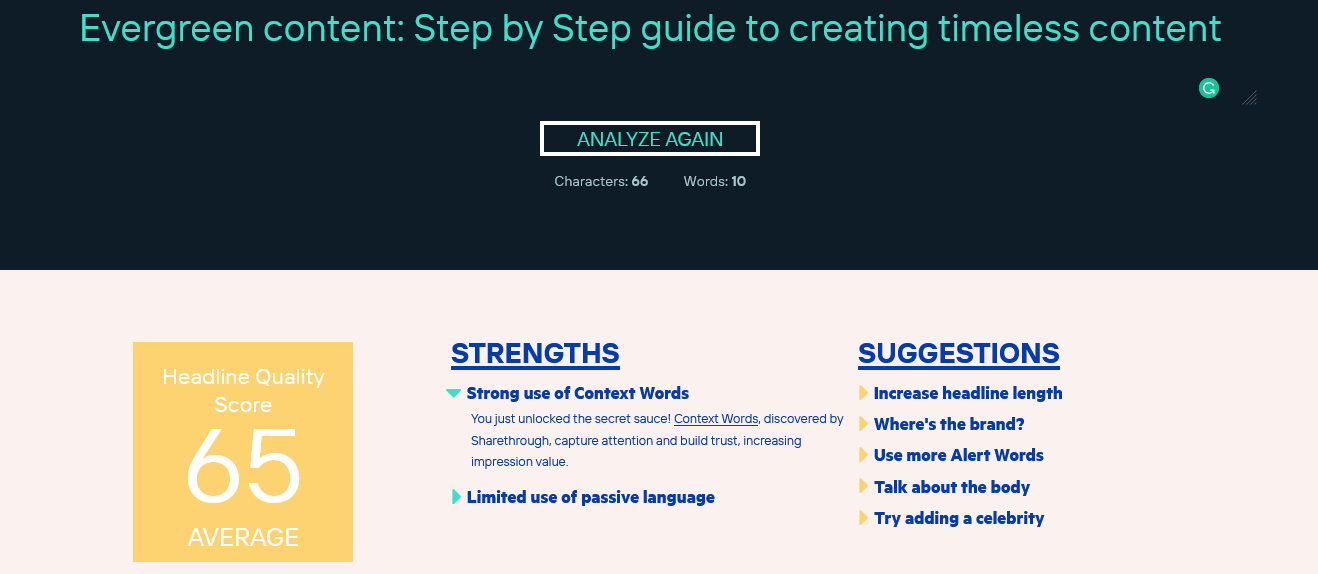How To Maximize Your Affiliate and Ad Revenue With Conversion Rate Optimization
Trafic. Trafic.Trafic. Thatʼs all everyone talks about in the internet marketing space. Newbies, in particular, consider tips and advice on any other topic a waste of time. But what good is all that traffic if it doesnʼt make you money?
If it doesnʼt click on your ads, doesnʼt buy from your affiliate links, doesnʼt join your email list?
Traffic is a huge marketing goal but it isnʼt the only one. Converting traffic into subscribers, buyers, ad clicks, and affiliate referrals is equally important. And this is where Conversion Rate Optimization (CRO) comes in.
Donʼt get confused by the fancy name. CRO simply means milking more value out of your existing traffic.
After all, isnʼt that the objective of marketing in the first place? You want people to buy from you so that you make money. You donʼt want them to come to your site, read content, say good things about you, but never buy from you.
You want them to convert. This is why more than 53% of marketers consider CRO crucial for their digital marketing strategy. Guide to Conversion Rate Optimization
Consider this
Getting 100,000 visitors/month and getting only 5% to click on your ads or affiliate links (100K x 5%=5000 conversions), or Getting 50,000 visitors/month and converting 20% (50K x 20%=10,000)
Which ones better? The latter of course.
Smart marketers, however, focus on both traffic and conversions. They continually take measures to increase traffic to their sites and design their sites and content in a way that ensures maximum conversions. The best of both worlds really.
What You Need To Know About CRO
Conversion Rate Optimization is a very broad topic. From website design and architecture to landing page copy and email marketing, CRO is applied everywhere.
So what exactly is a conversion? Every page on your site has a certain objective. Thereʼs a certain action or set of actions that you want your visitors to perform when they land on your site.
For example, when traffic from search engines or other sources lands on your homepage that has a big email sign up box with a call to action (like the one below), you want people to click on that button and join your list.
Every time a visitor does that, you call it a conversion. Conversion from a visitor to a subscriber.
That is just one type of conversion.
If youʼve published an affiliate product review, your objective is to get people to read it and click on the “Buy Now” or “Learn More” button so that they can be routed to the sellerʼs site.
So basically, a conversion happens when your website visitors perform your desired action. The higher the percentage of people who perform your desired action, the higher your conversion rate.
Ideally, you want 100% of your traffic to convert (which doesnʼt happen of course) But you can always look to increase your conversion rate by optimizing your website and its pages for conversion.
How do you do that? By testing different elements of your siteʼs design, colors, content, ad placements, words of your calls to action etc. In technical terms, we call this A/B testing.
A/B Testing and How It’s Done
A/B testing (also called split testing) is the process of testing different versions of your siteʼs content to see which one drives higher
conversions.
You can only perform credible A/B tests if you have enough traffic (around 10K visitors/month to start). The more data you have the better your results will be.
You run A/B tests by sending some of your traffic to one version of your page and some of it to the other version.
This helps you find the version that is driving more conversions. As a result, you keep the winner and discard the other version.
Then you create another version of your page or content and test it against the successful version to see if it can be improved even more. And thatʼs how you keep improving.
For example, if youʼve created a product review that has a “Learn More” or “Buy Now” button at the end, you could test two different colors of the buttons to see which one attracts more clicks.
Or you could change the location of the button or the number of times it appears in the article to see which version works the best.
This is how you test all the different elements of a page like colors, headings, button positions, ad positions etc. At first, this might appear a useless activity but youʼd be surprised to learn about the results.
eCommerce companies and marketers regularly run A/B tests to increase revenues
Examples of the Impact of A/B Testing
Hereʼs a really good example thatʼs also relevant to most content-heavy sites, Upworthy, a leading viral content website, requires all of its writers to pitch at least 25 headlines for every article they write. You read that right, 25
Why? Because viral content depends heavily on the headline. If the headline fails to catch the readerʼs attention, the rest of the content becomes useless.
The guys at Upworthy choose the best headlines from the 25 titles pitched by the writer. After that they test the shortlisted titles to find the ones with the highest click through rate (CTR).
The one with the highest score is published. The result? Most of their content goes viral. Similarly, many blogs test the placement of their social share buttons to find the spot that drives the highest social shares.
A popular position is right under the headline.
Another popular position is the floating widget that moves with the screen.
Which one works better? Only testing it can give you the right answer.
The Process of Running A/B Tests
Without going into too much technicalities, let me quickly explain the steps you need to follow to run successful A/B tests.
Step 1 – Identify the elements that you want to test (eg: Ad units, CTA buttons, Headlines etc.). Lit them down so that you can run separate tests for each element.
Step 2 – Now pick one element to test and find out its existing conversion rate.
For example, if you have Google Adsense ads on your blog and you want to see if changing the position of the top banner ad could increase your ad clicks, you first need to go to your Adsense account and find out the number of clicks your ad is getting in its current position.
This will give you a reference point to match your test results with.
Step 3 – Identify the goal you want to test (more clicks, more sign ups etc.).
Step 4 – Keep everything else constant and only change the element youʼre testing. For example, if youʼre changing the position of an ad unit, donʼt change the headline or your theme colors with it. Leave everything else the way it is.
Step 5 – Run the test long enough to gather a sizable data set
Step 6 – Compare the results with your existing metrics to see if the change has a positive or negative impact. If the impact is positive, you can replace the old version of the element with the more optimized version.
Step 7 – To further optimize the same element, you can run more A/B tests making other changes to it.
The Things You Need To Test On Your Site
Okay, by now you understand the concept of CRO pretty well. Itʼs time to understand exactly what you should be testing as an internet marketer. Based on the different business models,
Here are the things you should be testing.
Using CRO To Improve Affiliate Sales
To increase affiliate sales, you need to increase the number of clicks on your affiliate links in your content body, “Buy Now” buttons in reviews and comparisons, and a few other things.
Here are some of the things you should be testing
- Test the position of your affiliate links in the content. Do they blend in with the content or are they separately highlighted? Test different variations to find the winner
- Test the Anchor text of your affiliate links. Is the anchor text made up of action words like “Try Now”, “Learn More”, “Compare Prices” etc. or generic words?
- Do your reviews include comparison tables? Test the position of the tables and the number of columns. Sometimes too much information reduces action.
- Do you have product images? Are they generic or original? Do they blend in with the content? Test all of this.
- Do you highlight the pros and cons of the product or only sign praises? Highlighting a few disadvantages can also improve conversions
- Do you clearly highlight and promote your number one product (in case a post is promoting multiple products)?
Using CRO To Increase Content Consumption
Test your headlines using a headline analyzer tool like CoSchedule Headline Analyzer and Sharethrough.
For example, hereʼs the score of a headline I tested on Sharethrough
This tool give you very actionable tips on improving your headlines based on data , helping you to come up with better headlines
and increase your contentʼs click-through rate.
- Does your content have an index of the sub-headings? Try including it and test if increases time on page.
- Do you have images in the content?
- Have you broken down the content into multiple sub-headings or is it a long wall of text?
Using CRO To Increase Ad Clicks
- Test the different ad sizes and dimensions on your site.
- Try placing the ad units on different places of the page to see what drives the highest CTR
- Do you have footer ads that are displayed across your site?
- Test text ads vs banner ads to see which one performs better
- Are you using too many ad units on one page? Test to find out.
Using CRO To Increase Email Sign Ups
- Do you have a lead magnet to build your email list?
- Is your sign up copy convincing enough? Tried changing it?
- Are you using pop-ups for signing up subscribers? When does it show up – immediately or delayed? Test both the variations
- Whatʼs your Call to Action text? Is it using action words? Whatʼs the color? Test to find the best combination
- Where is your sign up box located? Header, side bar, footer? Test all the positions to find the top performing spot
What Tools To Use for Conversion Rate Optimization
As mentioned above, every aspect of your website can be optimized for conversions.
This is why A/B testing and some other CRO features are a part of most marketing tools like email marketing tools, landing page designers, content management platforms etc.
But generally speaking, here are some of the tools that can help you measure and improve the conversion rates of the different elements of your site
-
Analytics Tools
Tools that track all the visitor data on your site. Google Analytics is the first one that comes to mind because itʼs free and also the most popular. But there are others as well.
-
Heat Mapping Tools
Tools that help you track the most viewed parts of a page on your site. You can try free options like Sumo (good enough for most bloggers IMO) or go to the more advanced paid options like CrazyEgg
-
Survey Tools
Sometimes testing involves directly asking your site visitors if they find a feature or element useful or not. You can do that by running surveys with free tools like Google Docs or SurveyMonkey
-
Site-Wide User Testing Tools
These are the advanced tools (mostly paid) that identify potential improvement areas on your site and let you test them for user experience and user behavior testing. You donʼt need them as a beginner blogger IMO.
Wrapping Up Conversion Rate Optimization (CRO)
The whole point of testing different variations of your content, page structure, and ad locations is to find the combination that converts the highest percentage of your traffic into something profitable for your site.
Every website is different.
Which is why you cannot simply copy someone elseʼs approach without testing it first. When youʼre in the online marketing game, make a habit of testing everything whether itʼs your headlines, your ad units, affiliate links, or email subject lines.
Because thatʼs what all successful marketers do.
Consider Following a Course ?
With Lifetime Access ?
We have been the number 1# platform for delivering most demanding course. Becoming Lifetime Member , You will receive all the Premium content For FREE

Consider Following a Course ? With Lifetime Access ?
We have been the number 1# platform for delivering most demanding course. Becoming Lifetime Member , You will receive all the Premium content For FREE









